The Kailash Mansarovar Yatra represents one of the holiest pilgrimages in the world, revered by its followers from the Hindu, Buddhist, Jain, and Bon communities. Arrayed in the deeply remote wilds of Tibet, Mount Kailash and pristine Lake Mansarovar hold spiritual significance as the Himalayan abode of Lord Shiva. Thousands of devotees gather every year to gaze upon Mount Kailash, undertake the difficult yet life-transforming journey of blessings, perform parikrama, and enjoy every minute filled with scintillating tranquility.
With 2026 knocking at the door, many pilgrims have already begun the journey-planning process, and naturally, cost consideration is one of the most important factors. The overall cost of the Yatra ranges widely depending on the route, type of tour, level of comfort, and inclusion of services. From low-end inexpensive group trips to elite tailor-made private tours, it is essential that you know which factors affect the prices, thus giving you clearer grounds to decide on a tour and avoid inopportune spending.
This blog entry will put the cost of the Kailash Mansarovar Yatra 2026 under the microscope, consider competitions between group and private tour packages, and explain what is usually included (or excluded) in the price, together with some tips on how to work within your budget. By the end of this article, you will know roughly how much a spiritual trip might cost and how you can choose from packages that complement your budget, comfort level, and personal experience.
Also Read: What is Kailash Mansarovar Yatra?
Cost Breakdown
These are some guidelines on how much really can be expended for a Yatra. Very much depends on the nationality of the traveler, the route chosen, and the level of services availed. Most often, these tour operators from Nepal offer all-inclusive packages, which take care of practically all major expenses.
Itinerary/Route
The choice of route goes a long way in determining your overall costs. Travel via Kathmandu usually offers a lot of speed and convenience but comes with a higher profile price tag of expensive flight segments and Nepal entry permits. The other option is via Lhasa, which offers amazing views but requires complicated logistics involving greater Chinese travel permits and domestic flights or train fares within Tibet.
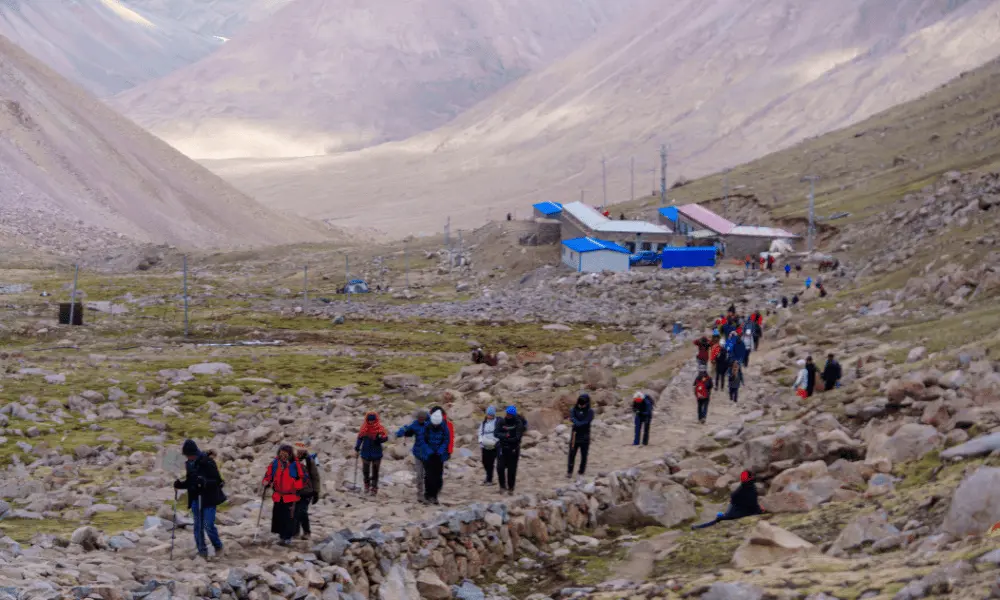
By Drive via Kyirong border
The cheapest option is usually through the Kyirong border, traveling overland through Nepal, and crossing into Tibet at Kyirong. No flights are involved in this route, and if it is a group journey, it becomes even cheaper. However, an extra day or two might be needed to acclimatize to the long high-altitude drive, thus increasing costs in accommodation, meals, etc.
Outline Itinerary
|
DAY 01: Kathmandu Arrival. |
|
DAY 02: Kathmandu Sightseeing, Visa Application. |
|
DAY 03: Bhaktapur Sightseeing. |
|
DAY 04: Chandragiri Sightseeing. |
|
DAY 05: Packing and Final Preparation. |
|
DAY 06: Drive from Kathmandu to Dhunche or Syabrubesi or Timure. |
|
DAY 07: Drive to Kyirong. (2850 m) |
|
DAY 08: Drive to Saga. (4500m) |
|
DAY 09: Drive from Saga to Lake Mansarovar. (4650 m) |
|
DAY 10: Drive to Darchen. (4700 m) |
|
DAY 11: Drive to Yama Dwara Trek to Derapuk. (4050 m) |
|
DAY 12: Trek to Zuthulpuk. (4800 m) |
|
DAY 13: Zuthulpuk to Saga. (4500 m) |
|
DAY 14: Drive back to Kyirong. (2850 m) |
|
DAY 15: Drive to Kathmandu. (1400 m) |
|
DAY 16: Transfer to Airport. |
Learn More: KMY by Drive via Kyirong
By Helicopter via Nepalgunj
In a more expensive go-anywhere kind of way, the journey from Kathmandu to Nepalgunj is done by plane and then by helicopter to Simikot, from where the road leads to the Tibet border. Convenience is the main selling point here, so while paying for the flights and the helicopter will go against the frugal spirits, the time saved by not spending days on end in one sitting on a heli ride from Simikot to the border must be worth it. Physically less-straining travel is well suited to those who value comfort over low vantage.
Outline Itinerary
|
DAY 01: Kathmandu Arrival. (1400 m) |
|
DAY 02: Kathmandu Sightseeing. |
|
DAY 03: Bhaktapur Sightseeing. |
|
DAY 04: Chandragiri Sightseeing. |
|
DAY 05: Pack and Fly to Nepalgunj. |
|
DAY 06: Fly from Nepalgunj to Simikot. (2910 m) |
|
DAY 07: Simikot - Hilsa - Taklakot. (4025 m) |
|
DAY 08: At Taklakot – Rest Day Full Day – Free for Acclimatization. |
|
DAY 09: Drive from Taklakot to Lake Mansarovar. (4650 m) |
|
DAY 10: Drive to Yama Dwara Trek to Derapuk. (4050 m) |
|
DAY 11: Trek to Zuthulpuk. (4800 m) |
|
DAY 12: Zuthulpuk to Hilsa or Simikot. |
|
DAY 13: Hilsa to Simikot, Fly back to Kathmandu via Nepalgunj. |
|
DAY 14: Transfer to Airport. |
Learn More: KMY by Helicopter via Nepalgunj
By Flight via Lhasa
The other favored route involves going via Lhasa by airplane and road, thus usually costing more. On account of costly airfare, the need for another set of permits, and stays to be enjoyed in a class higher than the more humble abodes back home. This, however, opens doors to an experience with the Tibetan promotion of culture that allows travelers to explore the city’s historic and spiritual landmarks before continuing their pilgrimage.
Outline Itinerary
|
DAY 01: Kathmandu Arrival, Transfer to Hotel. |
|
DAY 02: Flight to Lhasa. (3656 m) |
|
DAY 03: Lhasa City Tour. |
|
DAY 04: Drive to Shigatse. (3860 m) |
|
DAY 05: Drive to Everest Base Camp. |
|
DAY 06: Drive to Saga. (4500 m) |
|
DAY 07: Drive to Darchen via Lake Mansarovar. (4650 m) |
|
DAY 08: Trek to Derapuk. (4050 m) |
|
DAY 09: Trek to Zuthulpuk. (4800 m) |
|
DAY 10: Trek to Darchen. (4700 m) |
|
DAY 11: Drive to Mansarovar. (4650 m) |
|
DAY 12: Drive to Saga. (4500 m) |
|
DAY 13: Drive to Shigatse. |
|
DAY 14: Drive to Lhasa. |
|
DAY 15: Fly back to Kathmandu. |
|
DAY 16: Transfer to Airport. |
Learn More: KMY by Flight via Lhasa
Travel Style
How you want to go will greatly affect the total price. Standard group tours are cheaper since shared rooms are included along with common transport and fixed meals. A luxury or private yatra, however, will arrange for private vehicles, upgraded hotels, and exclusive helicopters for those who consider comfort over cost.
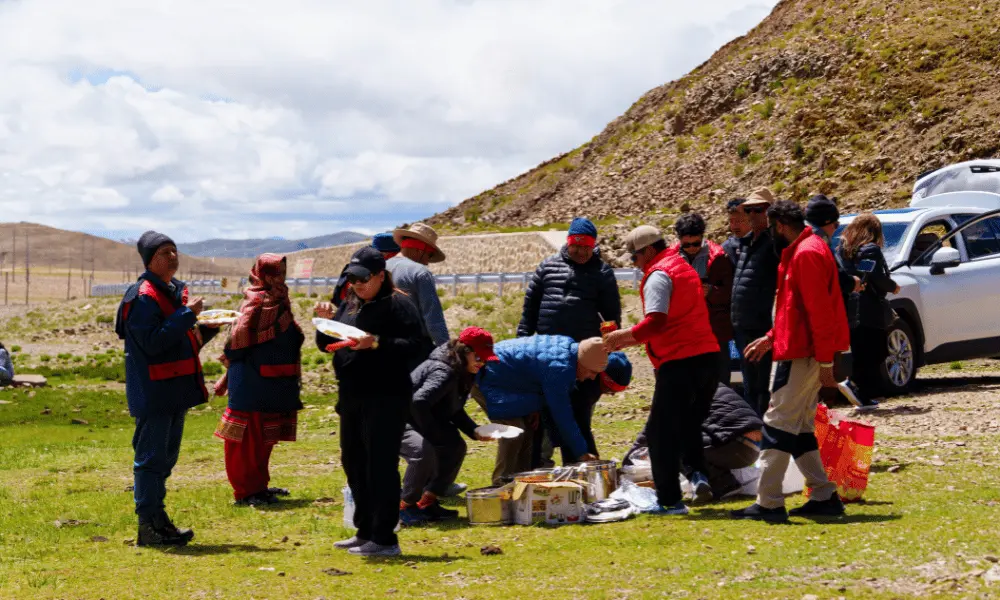
Group Joining Tours
Group tours generally involve combined groups of 20 or more participants. These tours tend to be more affordable if you are going for pilgrimage packages, as the transportation, lodging, guide fees, and other costs are divided among the group members. They serve as an excellent choice if pilgrims want to keep their costs down yet complete the required pilgrimage. Group tours mostly go with a fixed itinerary with modest accommodation and do provide a layer of organization that is particularly helpful for those participating in such a journey for the first time.
Private Tours
A private Kailash tour invites fewer numbers, ranging from 4 to 6 people, allowing for the services of a single guide, a tailor-made itinerary, and more comfortable lodging and transport. These tours generally provide a flexible and customized experience but come at a higher price than a group one owing to their exclusivity and range of options. Hence, another few bucks should be set aside for better accommodation, private transport, and enhanced support services. This one works best for those who do not mind spending extra for a more flexible, individually designed pilgrimage experience.
Accommodation
Accommodation is another area where prices can rise. In the remote Tibet region, accommodation choices are limited, and basic guesthouses in Tibet and Nepal are witnessing a steady-rate increase with limited availability. Those electing more upscale lodges or hotels at transit hubs like Kathmandu and Lhasa will have to shell out even more money.
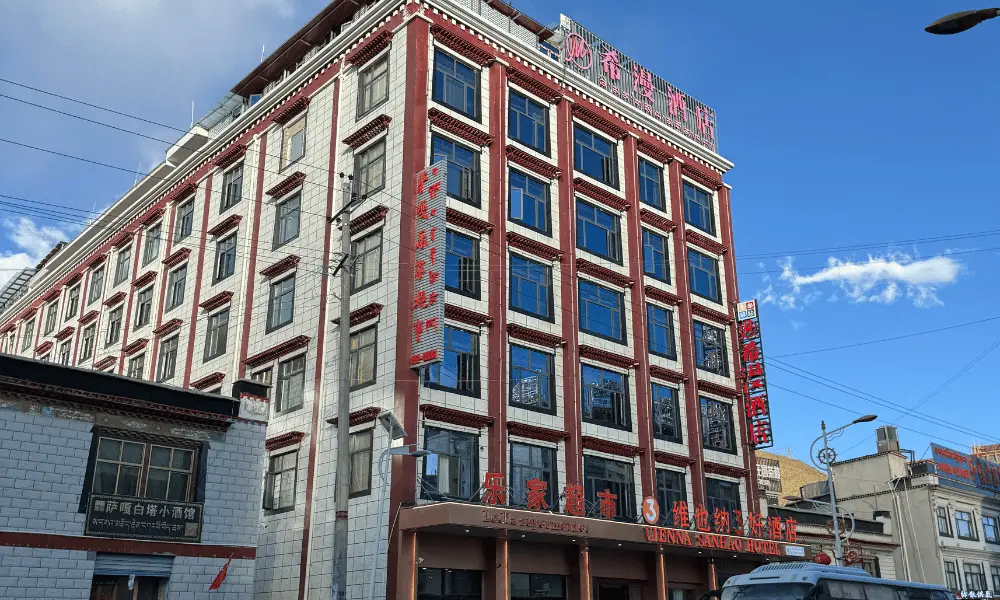
On the Nepal side
Travelers in Kathmandu can have every accommodation range from basic lodges to five-star establishments. Comfort and facilities are far better than on the Tibetan side, generally speaking. The nearer one approaches the border, the simpler the accommodations become, with guesthouses often offering shared facilities. The type of accommodation chosen will largely determine the cost of your Yatra, higher star ratings and loftier luxuries generally demand higher expenses.
On the Tibet Side
The Tibetan side also offers accommodations that go up to luxury and go down to basic, as the Yatra route goes through remote areas. In the towns, they may offer 3 to 4 star standards for hotels, but during the trekking part, there are only local lodges where facilities are too minimal, and in some locations, there are no proper toilets within the premises. The very best of these lodges during the parikrama will offer only the bare essentials: electricity.
Mode of Transportation
One's choice of mode of transportation influences the overall expense quite considerably. Such helicopter segments as Simikot-Hilsa might ensure time-saving but at the expense of ramped-up expense levels. Roadways might seem more cost-efficient but will take time, along with the need for paying for additional meals and accommodations en route.
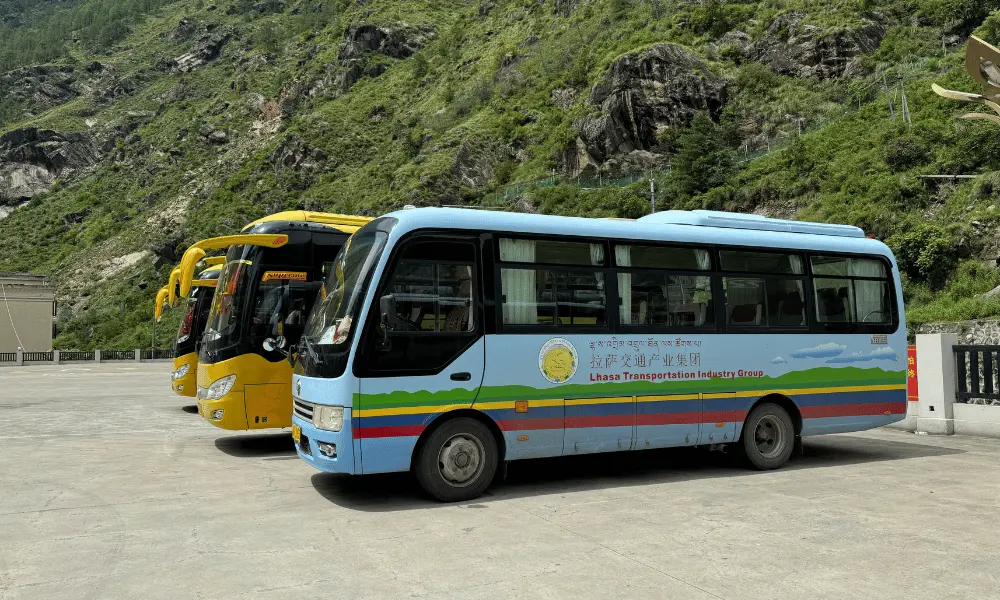
On the Nepal Side
In Nepal, both road and air provisions are offered. Pilgrims can choose to take a heli or take the bus or jeep to the border, depending upon their level of comfort. Often, when time and cost allocation permits, flights are taken from Kathmandu to Nepalgunj, then from there to Simikot, and lastly by helicopter to Hilsa, simply the most convenient and fastest mode of travel.
On the Tibet Side
Most group tours employ shared transport such as coaches or buses. To a smaller extent, jeeps and cars might be hired privately for the little add-ons one wishes. Tibetan roads are still the main mode of transport, and the very idea is to take in the region's incredible remoteness and natural beauty while driving.
Number of Support Team Members
The support team for the yatris varies in number and composition based on the need for a safe and comfortable pilgrimage. For groups of 4 to 6 persons, there is typically one English-speaking guide from Nepal, one English-speaking guide from Tibet, and a cook. If required, additional support can be sourced for the particular needs of the group at an increased cost to the Yatra.
Package Inclusions
Your package inclusions will determine how much one pays for the Kailash Mansarovar Yatra, for the more that are included, the more services and amenities are made available. Important cost components would certainly be the permits and visas, which are mandatory, whether or not one is paying for a more expensive helicopter transfer or an overland transport, plus accommodation standards themselves (the cheap choice being the Kora guesthouses and the best being the equipped hotels in Kathmandu) and food. Also, the qualifications and number of guides and staff contribute to costs.
Kailash Yatra Packages: Budget to Luxury
The Kailash Yatra provides all modes of travel designed as per budget and preference, from the cheapest to exclusive private tours. Whether you want to travel in a simple, budget way or one of those luxury, all-inclusive packages, all are arranged to impart a secure, spiritual, and memorable pilgrimage to the holy Mount Kailash and Mansarovar Lake. Provided is the cost differentiating the group tours and the private one, with the cost associated according to the nationals.
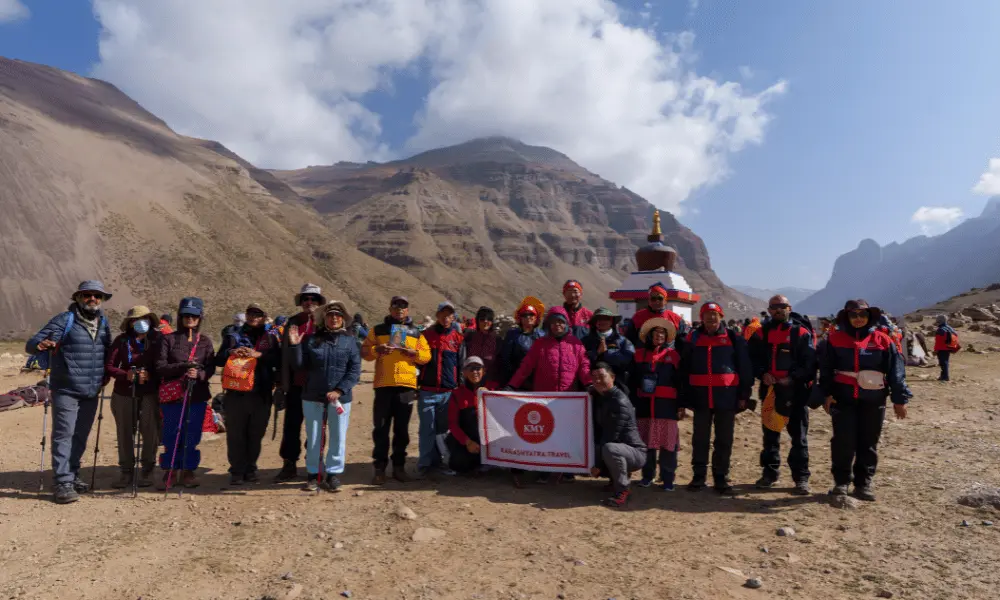
Group Joining Trips
A spiritual seeker who wants to travel on a tighter budget may prefer to travel on one of the group-joining options by road via Kyirong border or by helicopter from Nepalgunj or Lucknow with basic services and comforts in the arrangements.
|
Package |
Cost |
||
|
Nepali |
Indian |
NRIS/Foreigners |
|
|
NPR 170000 per person |
INR 210000 per person |
USD 3200 per person |
|
|
— |
INR 280000 per person |
USD 4300 per person |
|
|
INR 260000 per person |
— |
||
Private Trips
If one prefers to experience the comfort of a personalized service, then it's well-advised to take the private ones for luxury accommodation and personal assistance coupled with a more relaxed itinerary.
|
Private Tour |
Cost |
|
USD 5100 per person |
|
|
USD 6200 per person |
|
|
USD 4600 per person |
Luxury Trips
Those who want to experience the high-end services even in the remote landscapes of Tibet, this is for you. The ultimate way to experience Kailash Mansarovar, luxury trips combine spiritual fulfilment with premium comfort. Here, one can expect luxury accommodation, helicopter transfers on the Nepal side, land cruiser in the Tibet side, 4–5 star or the best available hotels on the Tibet side and guided tours with the professionals.
|
Luxury Tour |
Cost |
|
USD 6500 per person |
Registration is open for Kailash Mansarovar Yatra 2026; please contact us for any enquiry and to reserve your seats for the ultimate pilgrimage of your life.
2026 Price Surge Factors
Kailash Mansarovar Yatra, more than an ordinary trip, is an intensely spiritual journey drawing pilgrims from every part of the world. Those going for their yatra in 2026 should, however, get ready to face higher prices than previous years. The cost of the Kailash Mansarovar Yatra 2026 is expected to witness an increase from previous years, spurring a cluster of reasons for this apart from inflation. Specific factors shall render the increase in price, making planning in advance and booking early all the more important.

Transportation Costs
Whether international or local in Nepal/Tibet. Fuel prices, higher airfares for flights to Kathmandu or Lhasa, and higher charges for overland freight lying along some rugged high-altitude mountain terrain all push the trip higher in terms of price. Even the bus and jeep services ferrying the pilgrims from bordering towns to the trekking route have witnessed gradual price hikes since a few years ago.
Operation challenges in remote areas
The inherent difficulties in remote terrains make it almost impossible to conduct straightforward operations concerning this pilgrimage. It involves everything, from booking accommodation to having food supplies, medical kits, or even oxygen cylinders being sent out over long distances across challenging high-altitude passes. Any interruption due to snow or landslides or even when roads get closed on such routes inevitably adds to the logistical costs, which are, in turn, passed down to the yatris.
Exchange Rates
Since most trip prices are set in Chinese Yuan and U.S. Dollars, any weakening of the Indian Rupee or Nepalese Rupee against these major currencies will actually make South Asian permits, lodging, and travel costlier for travelers.
Also Read: Kailash Mansarovar Yatra Preparation
Other Costs and Emergency
A preparatory factor for the Kailash Mansarovar Yatra 2026 is to comprehend that the package offered by travel agencies usually covers the core set of expenses-one being the permit, transportation, accommodation, and very basic meals. There are many extra expenses and unexpected emergency costs that may surface on the journey. It's a good idea to plan for all of this so that the journey is completely stress-free, moving only as a spiritual experience.
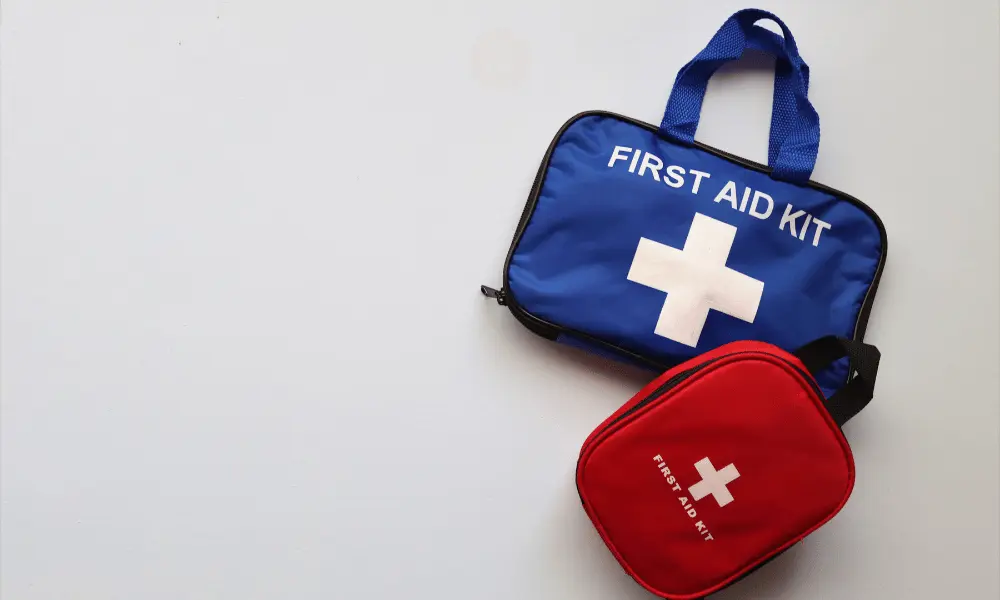
Personal Expenses
One of the most overlooked budgeting aspects of the yatra is those personal expenses. Tea, coffee, or any other bottled water and packaged snacks can find their way into your expenses while en route with your tour, which typically covers standard meals and hotel accommodation. Tips for guides, drivers, and porters are also expected and appreciated in both Nepal and Tibet. Additionally, many yatris will buy souvenirs such as Tibetan prayer flags or beads or some local handicrafts, and it is common to make small donations at the temples and monasteries along the way.
Medical Costs and Insurance
Medical costs and insurance shall be taken with priority rather than as an afterthought. A very good travel insurance with high-altitude trekking and emergency evacuation is highly recommended. Without insurance, helicopter rescues or medical transports crossing borders can drain a lot of money. Besides, yatris should always put in their luggage a personal supply of their medicines, tablets for altitude sickness, and a basic first-aid kit because medical facilities will be very limited in the more isolated areas.
Porter and pony expenses
Porter and pony services on the Tibet side can be a massive economic drain for many yatris, especially during the lengthy Kailash Parikrama that takes three days to be completed. This trek is challenging with mountain passes, but hiring a pony can be costlier if you are unable to do the yatra by walking. These services are generally charged around 4700 yuan (USD 700) for each person. While it is not compulsory to hire them, they may just be the prior safety and comfort investment one wants to make.
Emergency Costs
Emergency costs remain most unpredictable during the whole trip. There may be evacuation if any person is suffering from altitude sickness, injury, or sudden weather changes, especially by road or helicopter, both of which could cost thousands if you are uninsured. Unplanned delays due to natural disasters or other external factors also mean having to shell out more for hotel nights and food.
Saving Strategies and Advance Planning
For many, the pilgrimage is a once-in-a-lifetime experience. But it need not become prohibitively expensive. In fact, with careful planning and some judicious decisions, you can reduce expenditure drastically while making the journey comfortable and enjoyable. Planning strategically from months before the actual booking to choosing inexpensive routes and even setting out during the off-season will ensure you get value for every rupee spent. The following tips will thus help you save a lot of money without taking away from the spiritual and cultural experience of the pilgrimage.
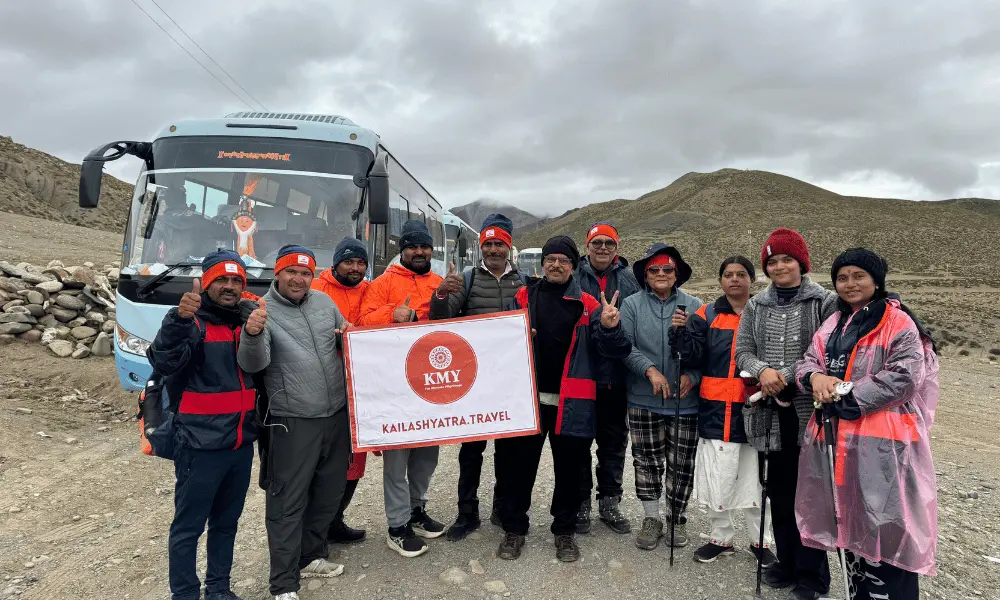
Book Early (6–8 months earlier)
Booking a pilgrimage well ahead of time may land you better deals, guaranteed places in a coveted batch, and room availability. Travel agencies usually announce early bird discounts during the lean season (October to January), with costs hiking as yatra dates grow nearer.
Go Overland
Overland routes to Kathmandu via Kyirong are much cheaper than the helicopter flying routes; they are longer, however. Moreover, this allows gradual altitude gain, which is good for proper acclimatization and reduction of chances of getting altitude sickness.
Go With Large Groups
The cost of traveling with larger groups of 15-20 or more is usually less expensive for each individual because they share the expenses of the transport, guides, and permits. Traveling in organizations bestows the kind of community support throughout the journey.
Travel Off-Peak
Avoid the peak traveling months of June and early July. Opt for early May and September-based dates in the trade-off between good weather and low price. Off-peak means fewer travelers, hence better ambiance.
Also Read: Best Time to Visit Kailash Mansarovar
Cost vs Value: What to Prioritize?
You want to avoid going for the cheapest packages because the value of the journey lies in safety, reliable logistics, and the ability to concentrate on the spiritual matter without any earthly troubles. Hence, spending extra on a reputable tour operator, quality hotels, or sound transportation arrangements turns what would be a stressful experience into a joyful and heart-warming adventure.
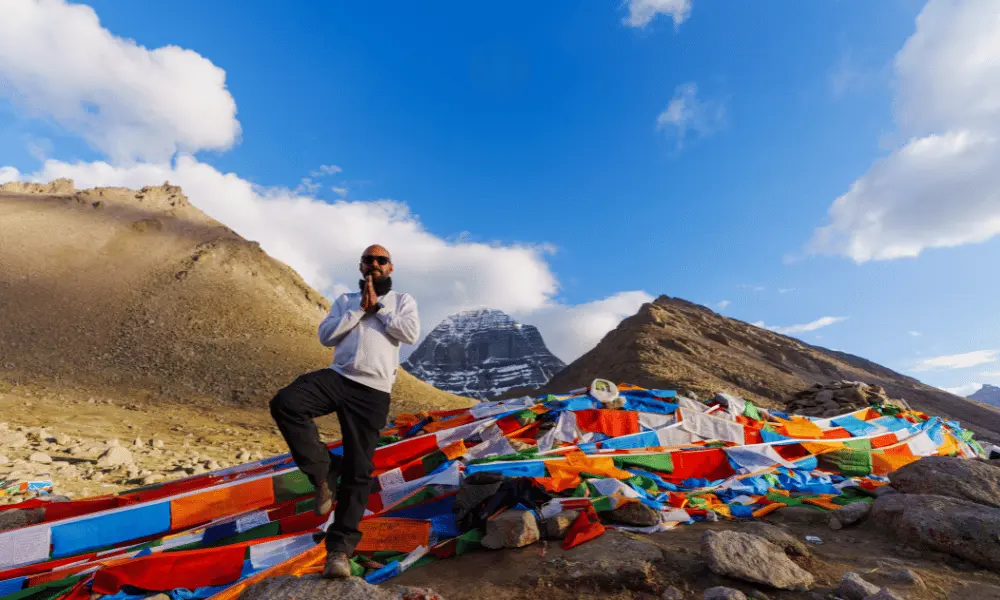
Safety First and Foremost
Never go for a less reputable tour operator just to save some money. That cheap package may well mean inexperienced guides, bad-quality accommodation and food, or compromised safety connotations, all of which in the high-altitude environment can become major threats to life. Do go for one with an excellent reputation and well-trained staff and emergency protocols in place.
Physical Fitness
If you are not an experienced trekker, going for the helicopter package is well worth the money. It eases the physical burden so you may concentrate on the spiritual experience of the journey.
Comfort Vs Compromise
Yatra is basically a pilgrimage, and a certain measure of austerity needs to be experienced. However, it is different being challenged spiritually than being inconvenienced unnecessarily. Small extra costs for slightly better food, comfortable accommodation in a few key towns, and well-equipped vehicles would actually make a lot of difference to the state of your being.
Reliable Logistics
From border permits to good transport over rough terrain, efficient coordination ensures that your journey remains on schedule. A well-managed itinerary will allow you not to suffer any delays, rather focusing on the spiritual side of the yatra.
Conclusion
The Kailash Mansarovar Yatra is far more special than being merely a walk; it involves an equally emotional spiritual preparation and very practical working-out of plans before its execution. Planning-wise, the cost of the yatra turns out to be the crucial factor. Costings depend upon types of routes (via Kyirong/Hilsa/Lhasa), from simple itineraries to luxurious ones, and all other logistics like permits, accommodations, and transportation.
By having a clear understanding of the current costs of 2026 and where to save or where to splurge, your pilgrimage can be made affordable, safe, comfortable, and very rewarding. Accordingly, balancing a budget with value amounts to booking the trip early, deciding the correct method of travel, journeying with well-organized groups, and choosing a reliable operator rather than a bargain. Henceforth, the memory, experience, and spiritual satisfaction are worth far more than any amount of money spent that has stepped closer toward the sacred heart of the Himalayas.
Frequently Asked Questions (FAQs)
Here are some FAQs related to Kailash Mansarovar Yatra in 2026:
What makes the package cost vary?
The variances depend on a bunch of things like the quality of accommodation, the type of transport used-road or flight, how many days of traveling there are, guide services, and finally, if it's a group or a private tour.
Are there some hidden costs I should carry in preparation?
No, there are no hidden costs associated with our package. However, additional costs could be tips for guides, shopping on one's own, medical expenses, extra meals and snack foods, and charges for pony riding or porter services during a trek.
What about currency exchange and payment methods during the Yatra?
It is wise for pilgrims to think about currency exchange and available payment methods beforehand while considering factors such as currency rate, availability of ATMs, and accepted payment methods on the Nepali and Tibet sides. On the Nepal side, one can easily find ATMs in accessible locations, and credit cards are accepted almost everywhere. However, carrying some cash might be more convenient for you. You can choose any currency exchange center in Nepal or can have the same exchange by the agency you are travelling with.

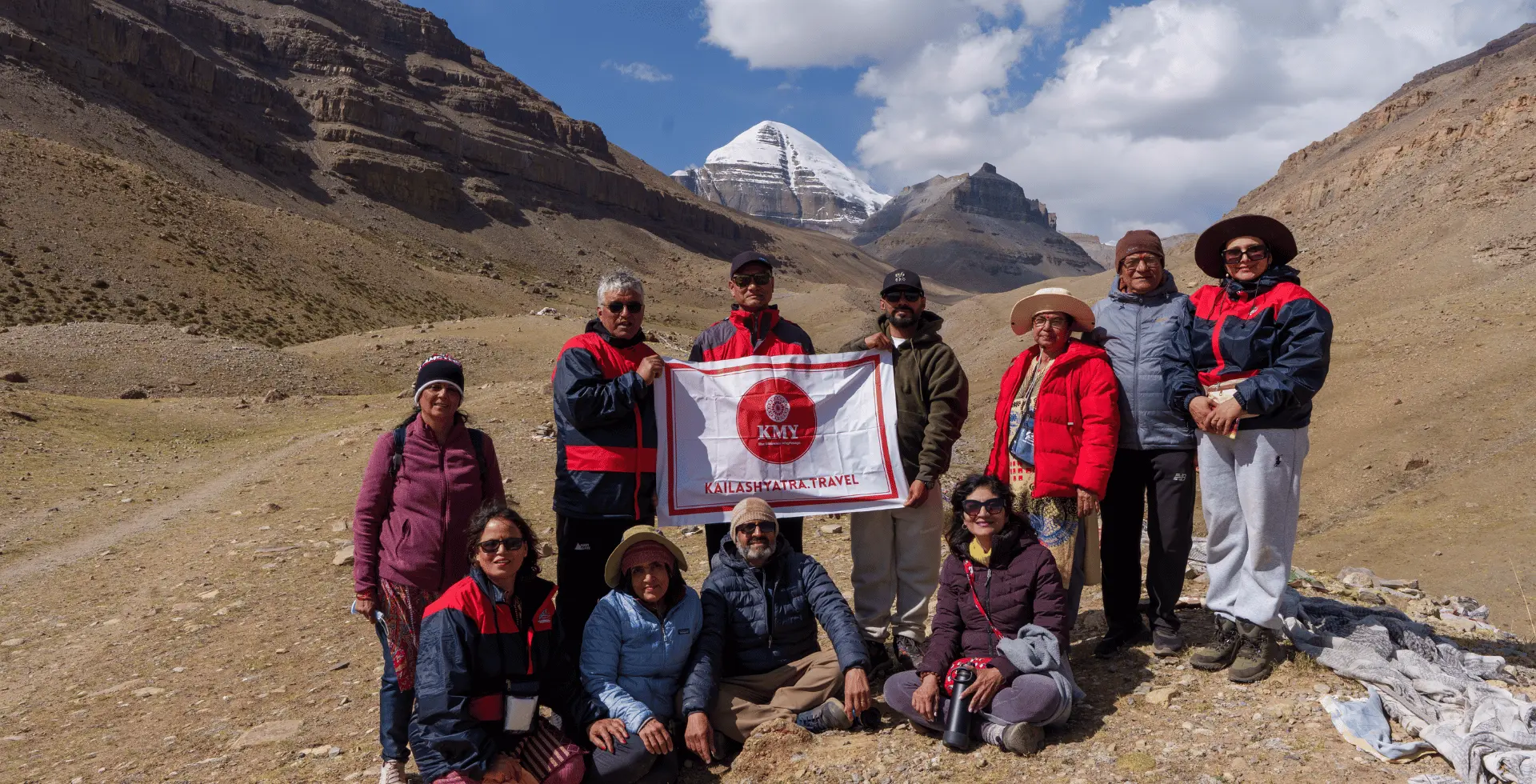
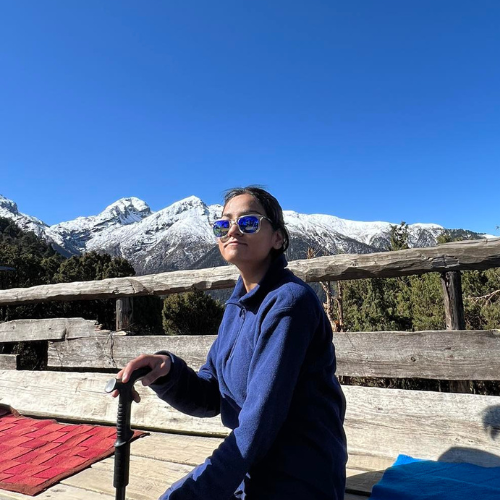 Mandira Itani
Mandira Itani